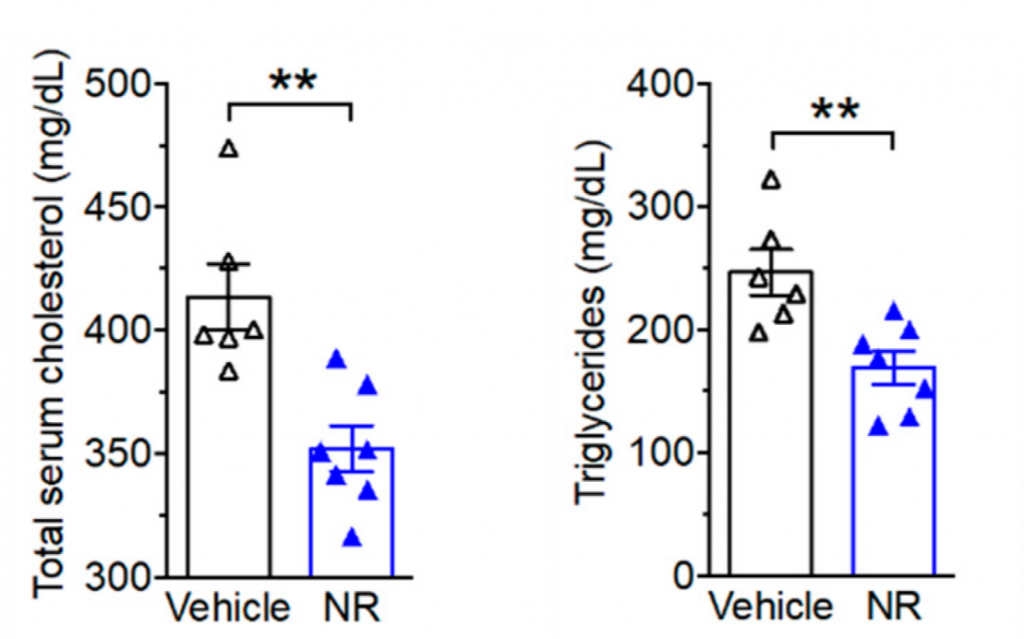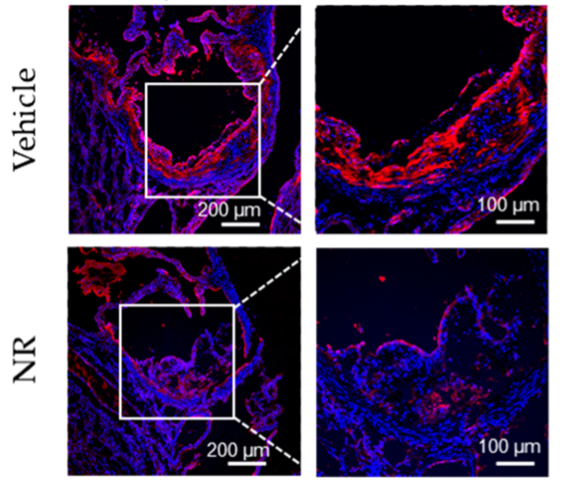Key Points:
- NR treatment reduces cholesterol and fat (triglyceride) levels in the blood.
- NR also reduces the size of artery plaques.
- NR reduces the infiltration of immune cells responsible for artery inflammation.
Depending on our dietary and exercise habits, cholesterol, fats, and other substances can gradually accumulate in our arteries during aging, leading to atherosclerosis — the leading cause of death in the United States. Consequently, atherosclerosis increases the probability of heart attacks, strokes, and other high-mortality events and diseases.
However, researchers from the Chinese University of Hong Kong report in Antioxidants that NR could combat atherosclerosis. Namely, Cao and colleagues show that NR treatment reduces circulating cholesterol and fat levels while diminishing artery plaque size and inflammation-promoting immune cells in mice with atherosclerosis.
NR Combats Cardiovascular Conditions
To induce atherosclerosis, Cao and colleagues employed genetically modified mice lacking a protein called apolipoprotein E, which unloads cholesterol and fats into cells from the bloodstream. The researchers fed these mice a diet rich in cholesterol for 12 weeks and during the last 4 weeks, the mice were supplemented with 400 mg/kg of NR.
As might be expected, the atherosclerosis mice had high levels of cholesterol and fats circulating within their blood. However, treatment with NR reduced both cholesterol and fat levels. These findings suggest that NR can reduce circulating cholesterol and fats, which may contribute to reducing the formation of plaques in the arteries.

High levels of circulating cholesterol, high blood pressure, and diabetes can damage our artery walls, contributing to the initiation of plaque formation. Cao and colleagues observed these plaques in the aorta — the largest artery in the body — of atherosclerosis mice. However, treatment with NR nearly cut the size of these plaques in half, suggesting the mitigation of atherosclerosis.

Once the cells of the artery wall are damaged, immune cells can infiltrate our arteries and promote the formation of plaques. These immune cells promote inflammation and oxidative stress, which are drivers of aging. Cao and colleagues found that there were fewer immune cells within the artery walls of NR-treated atherosclerosis mice compared to untreated atherosclerosis mice, suggesting a reduction in inflammation.

Can Boosting NAD+ Prevent Atherosclerosis in Humans?
Overall, the findings of Cao and colleagues suggest that NR can combat atherosclerosis by reducing circulating cholesterol and fat levels, plaque size, and immune cell infiltration. However, whether NR can prevent or counteract atherosclerosis in humans is unclear. Since NR boosts blood NAD+ levels in humans, its sister precursor NMN, which also boosts blood NAD+ in humans, could have similar effects.
That being said, NMN has been shown to reduce cholesterol, blood pressure, and body weight in overweight adults. Since high cholesterol, blood pressure, and obesity are risk factors for atherosclerosis, NMN could potentially mitigate the buildup of artery plaques by countering these risk factors. Importantly, maintaining a healthy weight through exercise and a healthy diet, along with not smoking can also prevent atherosclerosis.